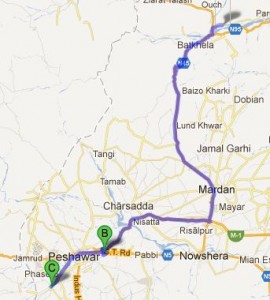Will al-Libi Killing Be Used to Justify Drone Strikes on Mourners, First Responders?
Back in early February, a report from Chris Woods and Christina Lamb at The Bureau of Investigative Journalism delivered the shocking news that CIA targeting practices for drone attacks include the intentional targeting of mourners at funerals and first responders to initial attacks:
The CIA’s drone campaign in Pakistan has killed dozens of civilians who had gone to help rescue victims or were attending funerals, an investigation by the Bureau for the Sunday Times has revealed.
/snip/
But research by the Bureau has found that since Obama took office three years ago, between 282 and 535 civilians have been credibly reported as killed including more than 60 children. A three month investigation including eye witness reports has found evidence that at least 50 civilians were killed in follow-up strikes when they had gone to help victims. More than 20 civilians have also been attacked in deliberate strikes on funerals and mourners. The tactics have been condemned by leading legal experts.
As Woods and Lamb point out, targeting mourners and first responders is a practice that is both heinous and likely to include civilian deaths along with those who are military targets. However, it now appears that the strikes that took out Abu Yahya al-Libi included both a strike on mourners and possibly a strike on first responders, so it seems likely now that there will be a push from Obama administration figures to provide a patina of glory derived from taking out al-Qaeda’s number two in command to a practice that Woods and Lamb pointed out amounts to “little more than extra-judicial executions”.
Before it was known that al-Libi had likely been killed, Glenn Greenwald pointed out yesterday that Monday’s strikes had been aimed at mourners and I pointed out that locals in the vicinity feared a follow-on strike hitting first responders. Greenwald cited and quoted from a Guardian article pointing out the mourner aspect of the strike. More details come from this article in Pakistan Today:
A US drone targeted a compound believed to be used by militant commanders Mullah Nazir and Commander Malang in the Wocha Dana Beermal area of South Waziristan.
While officials in various intelligence agencies have confirmed al-Libi’s death, officials in the United States endorsed that al-Libi was the target of Monday’s drone strike. There has not been any confirmation or rejection of the report by al Qaeda yet. According to reports, the militants had gathered in the compound to condole the death of Malang’s brother who was killed the previous day in a drone attack in the same area.
Multiple reports indicate that two missiles were used in the attack that killed al-Libi. Read more →

